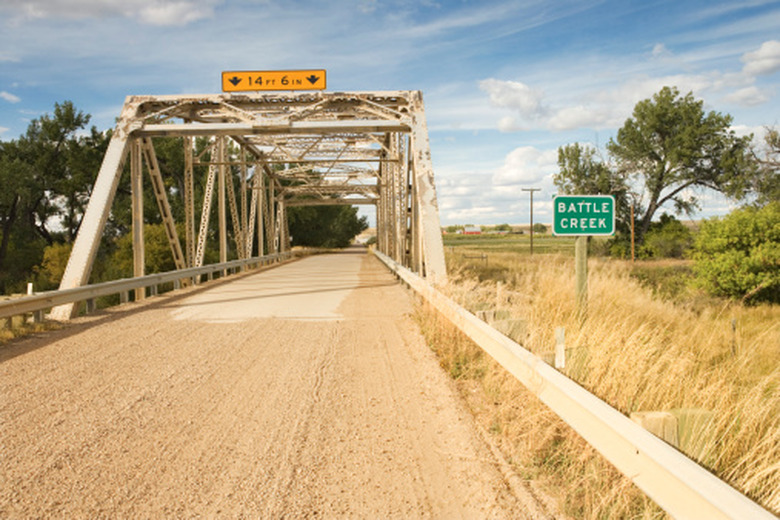Which Kind Of Bridge Is Stronger: Arch Or Beam?
Beams and arches are two of the oldest, simplest bridges in history and are still constructed today. The styles are easily differentiated by the shape of the support. Beam bridges use simple, vertical posts to suspend a straight, horizontal bridge, while arch bridges use a curving support structure.
Beam Bridge Weight Distribution
Beam Bridge Weight Distribution
In their basic form, beams are the simplest bridge design with anything from a stretch of elevated highway to planks of wood over a small ditch forming a beam bridge. The weight placed on a beam bridge is pressed directly downward, toward any underneath support, which makes the middle portion of the bridge the weakest. Beam bridges use vertical supports to secure the weight over longer distances. But regardless of the number of supports or how they are spaced, the weakest point is always directly in the middle, at the farthest point between each support.
Arch Bridge Weight Distribution
Arch Bridge Weight Distribution
Famously used by the Romans for aqueducts and walkways, arch bridges utilize a rounded structure to push the weight from the center outwards toward each end. Rather than having any point on the bridge support weight on its own, the arches push the weight evenly out to the supports. By design, no point of an arch is weaker than any other, with the arch actually working to hold itself up. This even weight distribution model informs the design of the bridge, with the center point of the bridge being quite thin compared to any other point. This is most noticeable in rounded, single-arch bridges where the middle is the highest and thinnest place in the structure.
Strength
Strength
An arch bridge is stronger than a beam bridge, simply because the beam has a weak point in the center where there is no vertical support while arches press the weight outward toward the support. This is one reason why beam bridges are typically limited to short spans, rarely more than 250 feet, although a series of beam bridges, called a "continuous span," is often employed to extend the bridge's length. Arch bridges, meanwhile, have been used to cover very long distances, with up to 800 feet for a single arch. The longest single-arch bridge (as of May 2011), the Chaotianmen Bridge in China, has a main span of more than 1,800 feet and a total of more than 5,700 feet. The longest continuous span bridge in the world, the Ponchartrain Causeway in Louisiana, stretches over 24 miles long but the two spans of the causeway use 2,243 and 1,500 individual beam bridges to cover that length.
Advantages and Disadvantages
Advantages and Disadvantages
While both types of bridges can be built to offer solid support over long distances, it is often aesthetics, materials and clearance that make the difference. Many supports must be used to stretch a beam bridge over a long distance, as seen with the Ponchartrian Causeway, and beam bridges are built low to use fewer materials, making it very difficult for boats to pass underneath the bridge. The necessary amount of beams can also make the bridge unsightly. Arches, meanwhile, can be built higher with fewer support beams, making clearance underneath the bridge a major benefit. The large span of the arch and unobstructed view beneath it can make arch bridges a spectacular sight. However, the means to build an arch bridge, starting at both ends and building outward until meeting in the middle, make them more complicated and expensive to build.
Cite This Article
MLA
Kroll, Jess. "Which Kind Of Bridge Is Stronger: Arch Or Beam?" sciencing.com, https://www.sciencing.com/kind-bridge-stronger-arch-beam-8430815/. 24 April 2017.
APA
Kroll, Jess. (2017, April 24). Which Kind Of Bridge Is Stronger: Arch Or Beam?. sciencing.com. Retrieved from https://www.sciencing.com/kind-bridge-stronger-arch-beam-8430815/
Chicago
Kroll, Jess. Which Kind Of Bridge Is Stronger: Arch Or Beam? last modified March 24, 2022. https://www.sciencing.com/kind-bridge-stronger-arch-beam-8430815/
